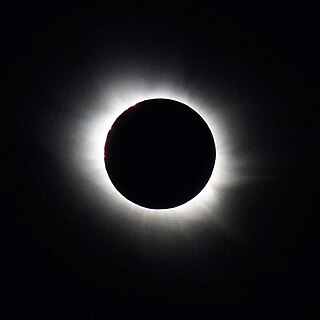| Solar eclipse of March 20, 2015 | |
|---|---|
 From Longyearbyen, Svalbard | |
| Type of eclipse | |
| Nature | Total |
| Gamma | 0.9454 |
| Magnitude | 1.0445 |
| Maximum eclipse | |
| Duration | 167 s (2 min 47 s) |
| Coordinates | 64°24′N 6°36′W / 64.4°N 6.6°W |
| Max. width of band | 463 km (288 mi) |
| Times (UTC) | |
| Greatest eclipse | 9:46:47 |
| References | |
| Saros | 120 (61 of 71) |
| Catalog # (SE5000) | 9541 |
A total solar eclipse occurred at the Moon's descending node of orbit on Friday, March 20, 2015, with a magnitude of 1.0445. A solar eclipse occurs when the Moon passes between Earth and the Sun, thereby totally or partly obscuring the image of the Sun for a viewer on Earth. A total solar eclipse occurs when the Moon's apparent diameter is larger than the Sun's, blocking all direct sunlight, turning day into darkness. Totality occurs in a narrow path across Earth's surface, with a partial solar eclipse visible over a surrounding region thousands of kilometres wide. This total solar eclipse is notable in that the path of totality passed over the North Pole. Totality was visible in the Faroe Islands and Svalbard.
The longest duration of totality was 2 minutes and 47 seconds off the coast of the Faroe Islands. It was the last total solar eclipse visible in Europe until the eclipse of August 12, 2026.[1]
The track of totality passed across the North Atlantic and into the Arctic Ocean.
- ^ F. Espenak & Xavier Jubier. "NASA - Total Solar Eclipse of 2026 August 12". Retrieved 20 March 2015.
